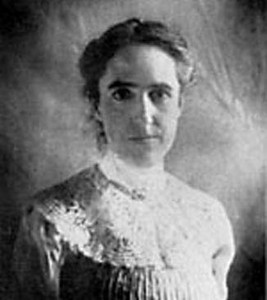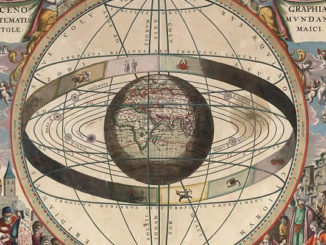The Discovery That Forever Changed Our Universe…

…came from a deaf American woman born on the 4th of July in 1868. Shortly after her graduation from what we now call Radcliffe, an illness caused Henrietta Swan Leavitt to lose her hearing. The Harvard College Observatory eventually hired her as a human “computer.” Her job: review the hordes of glass photographic plates and calculate the brightness of the stars in them. While reviewing a study of variable stars in the Large and Small Magellanic Clouds (small satellite galaxies orbiting our own Milky Way) she developed a fondness for the many Cepheid Variable stars within those two galaxies. A Cepheid Variable star dims and brightens over a regular period, so named because, in 1784, John Goodricke identified the first such example with the star δ Cephei in the constellation Cepheus. Leavitt became an accomplished variable star hunter, cataloguing 2,400 such stars during the course of her work – more than half the total known at the time.
In analyzing the plates, Leavitt began to notice the brighter Cepheids exhibited a longer period of variability. Four years later, after further analysis, she surmised the brightness of Cepheid Variables had a direct relationship with their period of variability. She deduced this relationship because all the stars in the Magellanic Clouds have the same distance from Earth. Since their distance is known to be constant, their relative brightness can be directly compared. She published her results in 1912. Unknown to all at the time, her discovery would forever change our understanding of the universe.
Cepheid Variables (and their kin RR Lyrae) have since become “standard candles” used to measure intergalactic distances. This discovery allows us to more precisely measure the distance of globular clusters and galaxies. Ironically, at the time of Henrietta Leavitt’s discovery of the period-luminosity relationship, astronomers did not know the galactic “nebula” they saw lay outside the boundaries of the Milky Way. It wasn’t until 1923 when Edwin Hubble conclusively proved for the first time one of these galactic “nebula” was indeed another galaxy – the Andromeda Galaxy. He did this only by discovering a Cepheid Variable within the 2.2 million light year distant galaxy. Unfortunately, Henrietta Leavitt never saw the cosmological implications of her stellar discovery. She died of cancer in 1921.




Be the first to comment